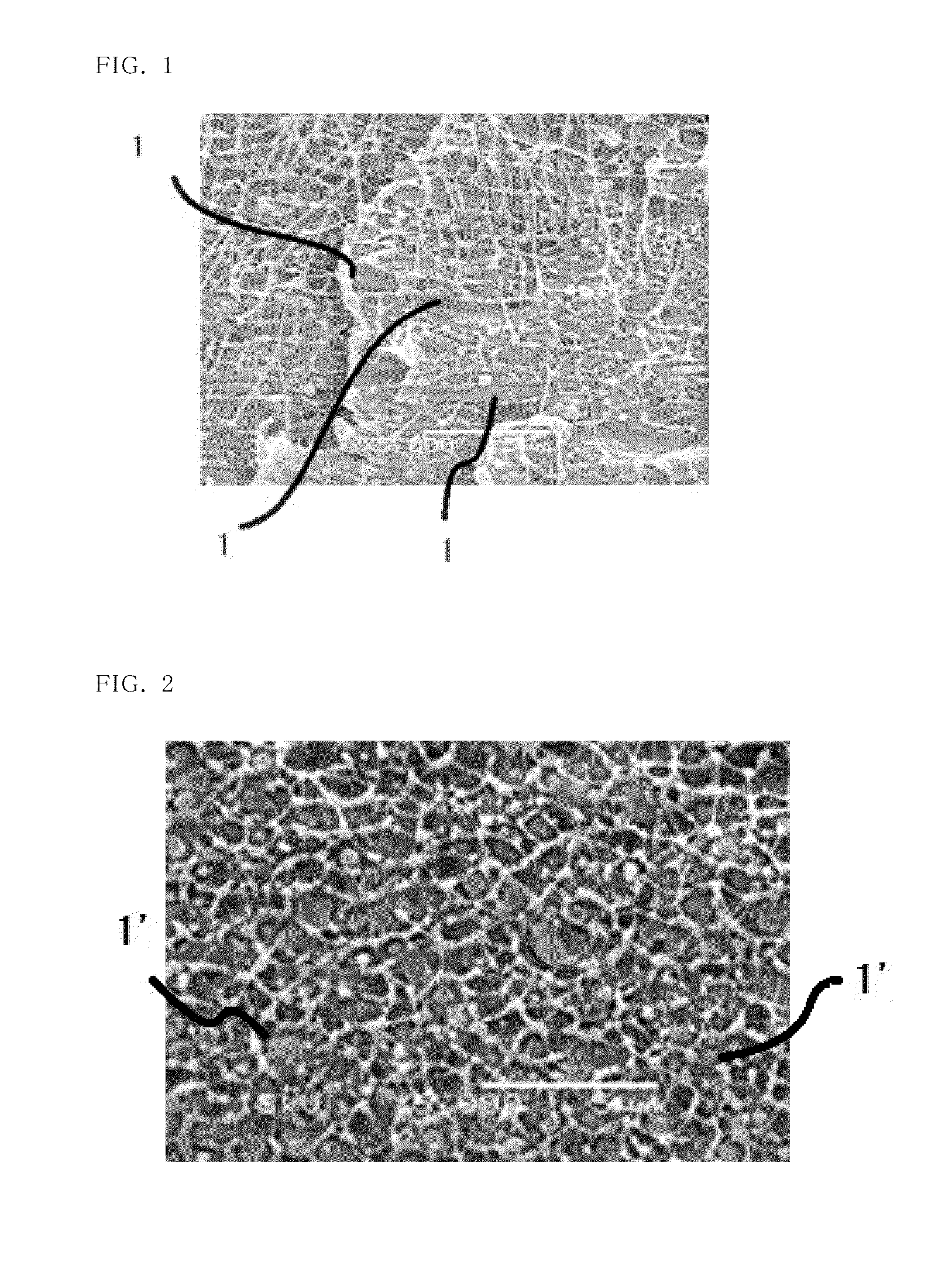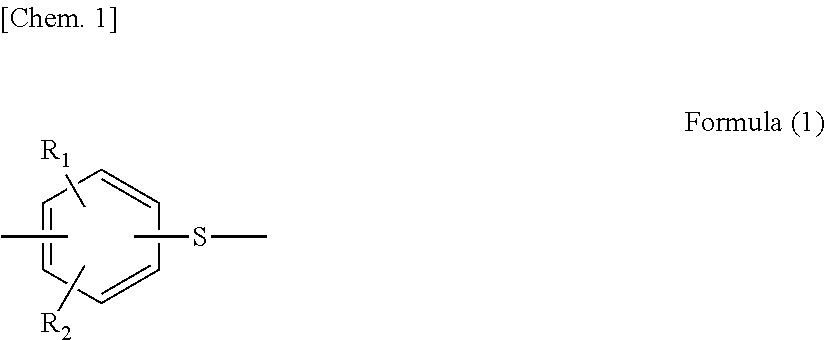Microporous member, method for producing same, battery separator, and resin composition for nonaqueous electrolyte secondary battery separator
a nonaqueous electrolyte, secondary battery separator technology, applied in the direction of cell components, cell component details, electrical apparatus, etc., can solve the problems of short-circuit electrodes, “meltdown”, to occur, shut-down function and resistance to thermal shrinkage are mutually incompatible, and achieve high resistance to thermal shrinkage
- Summary
- Abstract
- Description
- Claims
- Application Information
AI Technical Summary
Benefits of technology
Problems solved by technology
Method used
Image
Examples
examples
[0148]The present invention is described further in detail with reference to Examples below, which do not limit the present invention.
[0149]Sheets each having a specific composition that does not include a pore-forming-agent (d1)-component were prepared in the following manner. The thermal shrinkage ratio and mechanical strength of each sheet were measured by the following method. Thus, the properties of each sheet, which vary depending on simply the composition of the resin composition (α) but not on the factors of the type and amount of the pore-forming agent (d1) used nor on the structural factors of the shape and density of the micropores formed using the pore-forming agent, were evaluated.
PUM
| Property | Measurement | Unit |
|---|---|---|
| melting point | aaaaa | aaaaa |
| aspect ratio | aaaaa | aaaaa |
| temperature | aaaaa | aaaaa |
Abstract
Description
Claims
Application Information
 Login to View More
Login to View More - R&D
- Intellectual Property
- Life Sciences
- Materials
- Tech Scout
- Unparalleled Data Quality
- Higher Quality Content
- 60% Fewer Hallucinations
Browse by: Latest US Patents, China's latest patents, Technical Efficacy Thesaurus, Application Domain, Technology Topic, Popular Technical Reports.
© 2025 PatSnap. All rights reserved.Legal|Privacy policy|Modern Slavery Act Transparency Statement|Sitemap|About US| Contact US: help@patsnap.com



